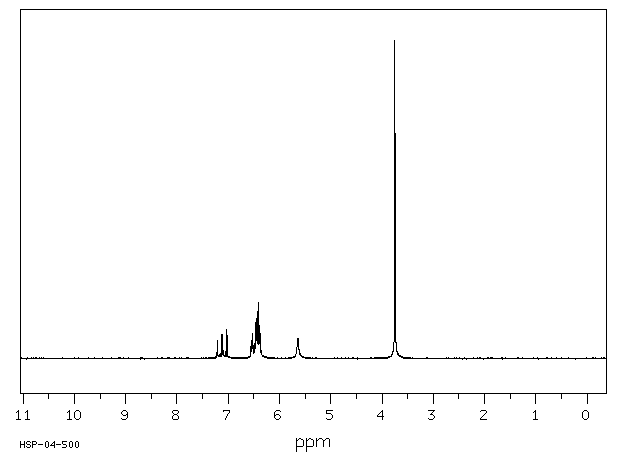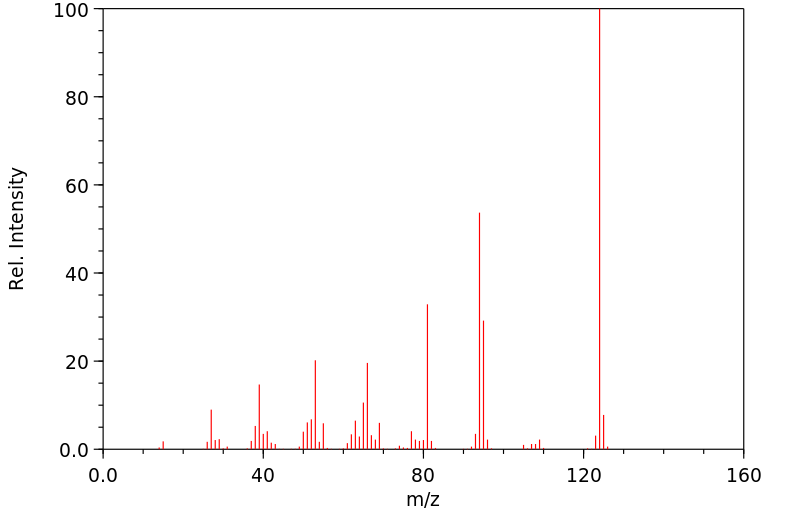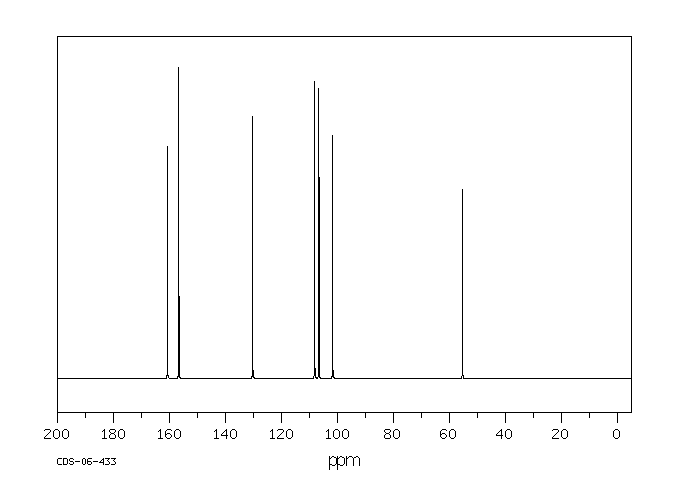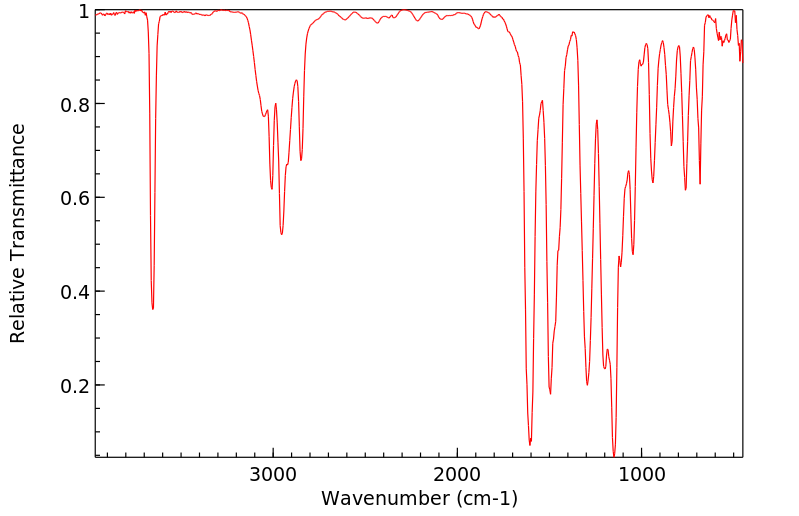| Name: | 3-Methoxyphenol 97% Material Safety Data Sheet |
| Synonym: | m-Hydroxyanisol |
| CAS: | 150-19-6 |
Section 1 - Chemical Product MSDS Name:3-Methoxyphenol 97% Material Safety Data Sheet
Synonym:m-Hydroxyanisol
Section 2 - COMPOSITION, INFORMATION ON INGREDIENTS | CAS# | Chemical Name | content | EINECS# |
| 150-19-6 | 3-METHOXYPHENOL | 97% | 205-754-6 |
Hazard Symbols: XN
Risk Phrases: 20/21/22 36
Section 3 - HAZARDS IDENTIFICATION EMERGENCY OVERVIEW
Harmful by inhalation, in contact with skin and if swallowed.
Irritating to eyes.
Potential Health Effects
Eye:
Causes severe eye irritation.
Skin:
May cause skin irritation. Harmful if absorbed through the skin. May cause skin discoloration.
Ingestion:
May cause irritation of the digestive tract. May be harmful if swallowed.
Inhalation:
May cause respiratory tract irritation.
Chronic:
Chronic exposure may cause visual disturbances.
Section 4 - FIRST AID MEASURES Eyes: Immediately flush eyes with plenty of water for at least 15 minutes, occasionally lifting the upper and lower eyelids. Get medical aid immediately.
Skin:
Get medical aid. Immediately flush skin with plenty of water for at least 15 minutes while removing contaminated clothing and shoes.
Ingestion:
If victim is conscious and alert, give 2-4 cupfuls of milk or water.
Never give anything by mouth to an unconscious person. Get medical aid.
Inhalation:
Remove from exposure and move to fresh air immediately. Get medical aid if cough or other symptoms appear.
Notes to Physician:
Section 5 - FIRE FIGHTING MEASURES General Information:
As in any fire, wear a self-contained breathing apparatus in pressure-demand, MSHA/NIOSH (approved or equivalent), and full protective gear.
Extinguishing Media:
Water or foam may cause frothing. Use water spray, dry chemical, carbon dioxide, or chemical foam.
Section 6 - ACCIDENTAL RELEASE MEASURES General Information: Use proper personal protective equipment as indicated in Section 8.
Spills/Leaks:
Absorb spill with inert material (e.g. vermiculite, sand or earth), then place in suitable container.
Section 7 - HANDLING and STORAGE Handling:
Wash thoroughly after handling. Use only in a well-ventilated area.
Do not get in eyes, on skin, or on clothing. Keep container tightly closed. Avoid ingestion and inhalation.
Storage:
Store in a tightly closed container. Store in a cool, dry, well-ventilated area away from incompatible substances.
Section 8 - EXPOSURE CONTROLS, PERSONAL PROTECTION Engineering Controls:
Use adequate ventilation to keep airborne concentrations low.
Exposure Limits CAS# 150-19-6: Russia: 0.5 mg/m3 TWA Personal Protective Equipment Eyes: Wear appropriate protective eyeglasses or chemical safety goggles as described by OSHA's eye and face protection regulations in 29 CFR 1910.133 or European Standard EN166.
Skin:
Wear appropriate protective gloves to prevent skin exposure.
Clothing:
Wear appropriate protective clothing to prevent skin exposure.
Respirators:
Follow the OSHA respirator regulations found in 29 CFR 1910.134 or European Standard EN 149. Use a NIOSH/MSHA or European Standard EN 149 approved respirator if exposure limits are exceeded or if irritation or other symptoms are experienced.
Section 9 - PHYSICAL AND CHEMICAL PROPERTIES Physical State: Liquid
Color: clear pink red
Odor: Odor of caramel and phenol
pH: Not available.
Vapor Pressure: Not available.
Viscosity: Not available.
Boiling Point: 243 - 246 deg C @ 760.00mm Hg
Freezing/Melting Point: -17 deg C
Autoignition Temperature: Not available.
Flash Point: > 112 deg C (> 233.60 deg F)
Explosion Limits, lower: Not available.
Explosion Limits, upper: Not available.
Decomposition Temperature:
Solubility in water: soluble in water
Specific Gravity/Density: 1.1310g/cm3
Molecular Formula: C7H8O2
Molecular Weight: 124.14
Section 10 - STABILITY AND REACTIVITY Chemical Stability:
Stable under normal temperatures and pressures.
Conditions to Avoid:
Incompatible materials.
Incompatibilities with Other Materials:
Bases - acid chlorides - acid anhydrides - oxidizing agents.
Hazardous Decomposition Products:
Carbon monoxide, carbon dioxide.
Hazardous Polymerization: Will not occur.
Section 11 - TOXICOLOGICAL INFORMATION RTECS#:
CAS# 150-19-6: SL7524000 LD50/LC50:
CAS# 150-19-6: Draize test, rabbit, eye: 5% Severe; Draize test, rabbit, eye: 100%; Draize test, rabbit, skin: 100%; Inhalation, mouse: LC50 = 11500 mg/m3/4H; Inhalation, rat: LC50 = 11500 mg/m3/4H; Oral, mouse: LD50 = 312 mg/kg; Oral, mouse: LD50 = 312 mg/kg; Oral, rat: LD50 = 597 mg/kg; Oral, rat: LD50 = 597 mg/kg; Skin, rat: LD50 = 682 mg/kg.
Carcinogenicity:
3-METHOXYPHENOL - Not listed by ACGIH, IARC, or NTP.
Other:
See actual entry in RTECS for complete information.
Section 12 - ECOLOGICAL INFORMATION
Section 13 - DISPOSAL CONSIDERATIONS Dispose of in a manner consistent with federal, state, and local regulations.
Section 14 - TRANSPORT INFORMATION IATA
Not regulated as a hazardous material.
IMO
Not regulated as a hazardous material.
RID/ADR
Not regulated as a hazardous material.
Section 15 - REGULATORY INFORMATION European/International Regulations
European Labeling in Accordance with EC Directives
Hazard Symbols: XN
Risk Phrases:
R 20/21/22 Harmful by inhalation, in contact with
skin and if swallowed.
R 36 Irritating to eyes.
Safety Phrases:
S 23 Do not inhale gas/fumes/vapour/spray.
S 24/25 Avoid contact with skin and eyes.
WGK (Water Danger/Protection)
CAS# 150-19-6: No information available.
Canada
CAS# 150-19-6 is listed on Canada's NDSL List.
CAS# 150-19-6 is listed on Canada's Ingredient Disclosure List.
US FEDERAL
TSCA
CAS# 150-19-6 is listed on the TSCA inventory.
SECTION 16 - ADDITIONAL INFORMATION N/A










